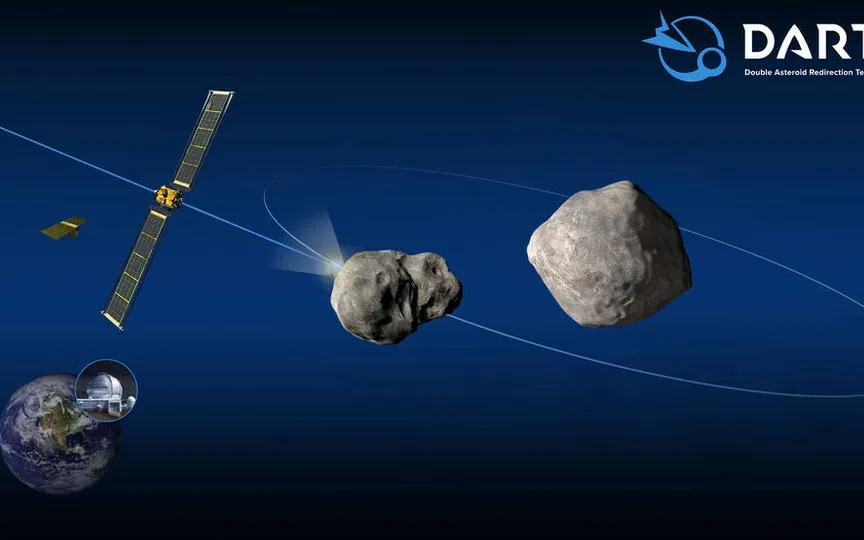NASA reveals its thoughts on improving the DART mission for asteroid deflection
Scientists have been diligently monitoring and developing strategies for decades to address the ongoing risk of asteroids colliding with Earth. One approach involves redirecting the path of these celestial bodies as they approach our planet. While the likelihood of an actual impact remains relatively low, the potential devastation necessitates ongoing vigilance and tracking efforts.
One such mission is NASA’s DART mission. It was NASA’s first ever mission with the main objective of investigating and demonstrating a method to bend an asteroid by altering its motion in space through a kinetic impact. The first such strike was carried out by NASA in 2022. Analysis of data collected by NASA’s Double Asteroid Redirection Test (DART) research team showed a spacecraft’s kinetic impact with the asteroid Dimorphos and it amazingly successfully changed the asteroid’s orbit forever.
In the field of asteroid bending, the Hollywood-style narrative often involves high-speed impactors or explosive nuclear devices. However, a recent paper by Nahum Melamed and Tom Heinsheimer proposes a groundbreaking alternative that could prove to be more effective and accurate in protecting Earth from potential asteroid impacts. Know what this research paper says.
Asteroid Declination:
According to NASA, traditional “big bang” methods rely somewhat on a “hit and hope” strategy. However, Melamed and Heinsheimer’s innovative approach introduces the concept of ejecting material that gradually changes the asteroid’s trajectory. They have proposed a centrifugal propulsion technique that involves lowering a centrifuge and power source onto the asteroid’s surface. This system would collect parts of the asteroid, throw them into space, and use the momentum transfer of the recoil to shift the asteroid’s path away from Earth.
What sets this approach apart is its adaptability and precision. Unlike single-stroke strategies, centrifugal propulsion technology allows for “remove, measure and repeat”. This ingenious process fine-tunes the asteroid’s trajectory, providing a controlled and targeted deflection. Landing location, asteroid spin rate, and velocity are all variables that can be taken into account, allowing for adjustments in direction, timing, and launch mass.
The team behind this proposal believe that with just a few weeks of operation, their method could have turned asteroids the same size as the Chelyabinsk asteroid and the Tunguska asteroid. The approach could potentially re-orient the trajectory of the Bennu asteroid, a major threat predicted for the second half of the 21st century, in just a few years of operation.
This new technology not only improves the effectiveness of planetary defense, but also brings flexibility not previously available. As we look to the future, this innovative approach may provide a more calculated and effective way to protect our planet from the ever-present asteroid threat.




